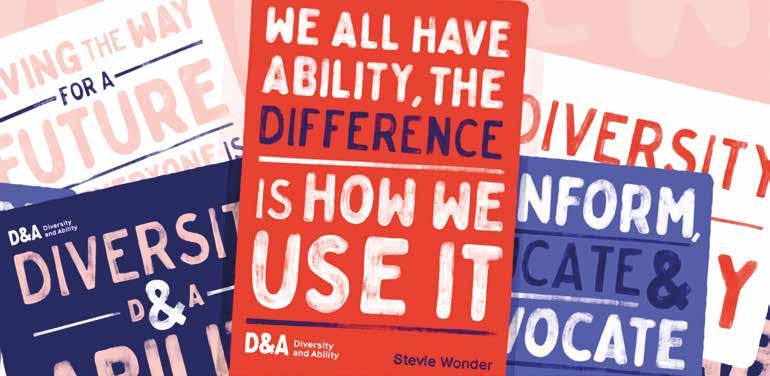Interview Feature NOVEMBER is UK Disability History Month (UKDHM), so we’re shining a spotlight on some issues surrounding disabled members and students during the pandemic.
PHOTO by Kois Miah
First, UKDHM founder Richard Rieser (pictured left at a UN Stand Up to Racism march) introduces this year’s theme – access – with some historical background. On pages 23 and 24, we talk to NEU executive officers Colleen Johnson, Louise Regan and Nicky Downes about the union’s guidance for disabled members and the current challenges for at-risk members during the coronavirus crisis. While on page 25, special needs teacher and dyslexia specialist Jane Parker suggests a multisensory approach to create dyslexiafriendly learning environments. Our Final word on page 50 is written by Diversity and Ability’s chief executive Atif Choudhury, who outlines a social model approach to understanding educational barriers; and read about the International Day of People with Disabilities on page 37.
‘Accessible to every sin “We need to make every single thing accessible to every single disabled person.” These were Stevie Wonder’s words at the 2016 Grammy music awards when he joked that he was the only person in the hall able to read the name of the Song of the Year winner, written in Braille on the golden envelope. But for the 11th UK Disability History Month, starting in November, the question of access remains a serious issue. Participation on an equal level Disabled people have a fundamental human right to gain access and participation on an equal level with others, regardless of our impairments. However, for many years disabled people struggled to adapt to society’s lived physical and information environment. The first International Human Rights Treaty to explicitly include accessibility as a principle was the UN Convention on the 22
Rights of Persons with Disabilities in 2008. There had been national laws, building codes and standards partially acknowledging the need for access in the previous 120 years. All of these were fought for by disabled people, their organisations and some nondisabled-led charities. People with sensory impairments were in the vanguard, arguing for the teaching and use of Braille and sign language, gaining concessions in a minority
Protests by members of the Direct Action Network in 1995 led to London buses becoming accessible
educate Your magazine from the National Education Union (NEU)
of mainly higher income countries. More recently, people with learning difficulties have fought for access to ordinary education. Members of Direct Action Network (DAN) chained themselves to buses in 1995, which led to more accessible transport in London – visit bit.ly/3lg1Smq Breaking down barriers Disabled people were seen as a problem to be made normal, a ‘medical model’ approach. Now the barriers faced by disabled people with a multitude of impairments need resolving. This is the ‘social model human rights’ approach. Accessibility is at the core and ICT has become much better at incorporating access and principles of universal design. In all subjects and at all levels, pupils can study the struggles, the barriers and the solutions. They can map their school or local area and its public transport, to identify barriers. They can work with teachers











